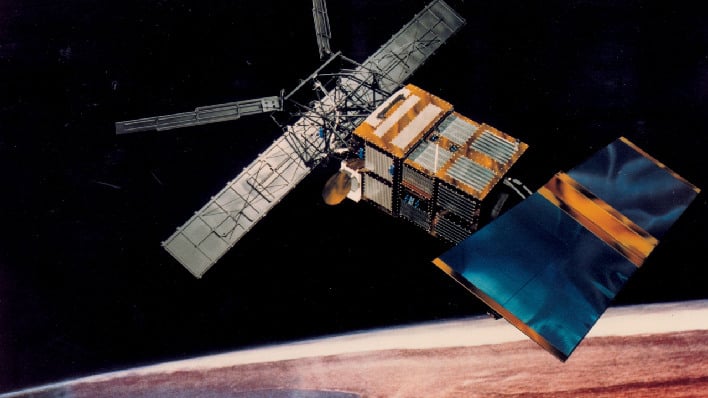A 2.5-Ton Out-Of-Control Space Satellite Will Smash Into Earth Today

According to the latest information from ESA, ERS-2 will make its reentry into Earth’s atmosphere at around 3:41pm UTC (10:41am ET) with an uncertainty of +-1.44 hours. At this time, the satellite is on track to make reentry somewhere over the Pacific Ocean off the coast of California. ESA remarked that the associated risks are “very, very low.”
The red dot on the graph below shows where ESA believes ERS-2 will begin to break up. The space agency remarked that the vast majority of the satellite will burn up, and that the remaining pieces will be spread out randomly over a ground track “on average hundreds of kilometers long and a few tens of kilometers wide.”
Some may wonder why the ESA remains uncertain as to the time and location of reentry so close to the event. According to the ESA, the uncertainty is largely because of the result of “how difficult it is to forecast the density of the air through which the satellite is passing.” Atmospheric density helps determine the strength of drag that causes ERS-2’s orbit to decay. However, the space agency’s ability to predict it is limited by how well it can model a “very complex” atmosphere and by current space weather.
During its time in service, ERS-2 was considered to be the most sophisticated Earth observation spacecraft to ever be developed and launched by Europe, according to the ESA. The mission of ERS-2 officially ended in 2011, when the satellite underwent a series of 66 de-orbiting maneuvers during July and August of the same year. De-orbiting a satellite at end of service is part of ensuring the satellites reenter Earth’s atmosphere, and a fundamental tool in how space agencies limit the amount of space junk floating around in low-Earth orbit.
The ESA will continue to track and monitor ERS-2 until it successfully reenters Earth’s atmosphere, and, hopefully, any surviving parts splash safely into the Pacific Ocean.


